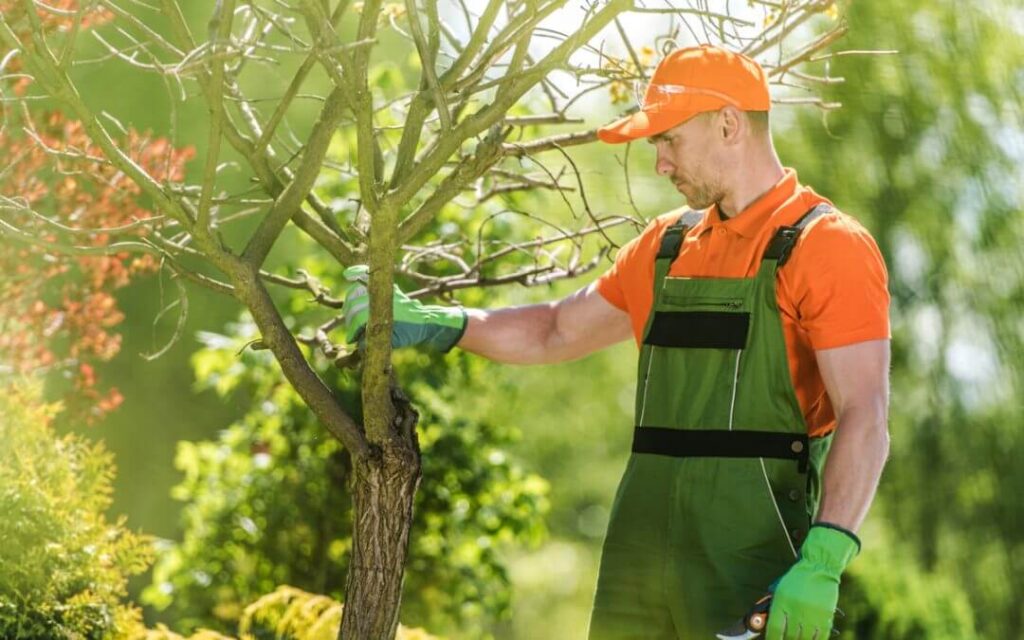Tree pruning is an essential practice for maintaining the health and aesthetics of trees on your property. Understanding the costs associated with tree pruning can help homeowners make informed decisions when hiring professionals for this service. In this article, we will delve into various aspects of tree pruning, including its importance, factors influencing costs, average pricing, and tips for saving money.
Understanding Tree Pruning
Tree pruning pricing involves selectively removing specific parts of a tree, such as branches and stems, to enhance its structure and promote healthy growth. This essential aspect of tree care helps maintain the tree’s vitality while also improving its aesthetic appeal. Proper pruning contributes to the overall health of the surrounding ecosystem, supporting wildlife and improving air quality. Tree pruning pricing typically varies based on factors like tree size, the complexity of the job, and the condition of the tree, making it important to get a tailored quote from a professional service.
What is Tree Pruning?
At its core, tree pruning is the practice of cutting away dead or overgrown branches and stems to encourage new growth. This technique helps improve air circulation and sunlight exposure, which are crucial for a tree’s health. Pruning can be performed on trees of all sizes and shapes, and the timing can vary based on species and local climate conditions. For instance, many flowering trees benefit from pruning right after they bloom, while others might require winter pruning to promote vigorous spring growth. Understanding the specific needs of each tree species is vital for effective pruning.
Why is Tree Pruning Necessary?
Pruning serves several essential purposes. Firstly, it removes any damaged or diseased branches, which can help prevent the spread of pathogens and pests. Secondly, it promotes strong structural growth, ensuring that the tree remains stable and less prone to damage during storms. Finally, regular pruning can enhance the tree’s appearance, making it a beautiful addition to your landscaping. Moreover, pruning can help manage the size of a tree, making it more suitable for urban environments where space is limited. By controlling the growth of trees, homeowners can prevent potential hazards such as branches encroaching on power lines or roofs, thus ensuring safety and compliance with local regulations.
Additionally, tree pruning can significantly impact fruit production in fruit-bearing trees. By selectively removing certain branches, gardeners can enhance sunlight penetration and air circulation, which are essential for fruit development. This practice not only leads to healthier fruit but can also increase yield. Furthermore, pruning can help shape young trees, guiding their growth in a way that maximizes their potential and minimizes future maintenance. It is a skill that, when done correctly, can result in trees that are not only healthier but also more visually appealing, contributing to the overall beauty of gardens and landscapes.
Factors Influencing Tree Pruning Costs
When it comes to the cost of tree pruning, several factors come into play. Understanding these can help you better anticipate what you may need to budget for this service.
Size of the Tree
The size of the tree is one of the most significant factors determining pruning costs. Larger trees require more time and resources to prune, often necessitating specialized equipment and safety measures. Conversely, smaller trees usually involve less labor and can be pruned more quickly, resulting in lower costs. Additionally, the height of the tree can influence the type of equipment needed. For example, a tall tree may require the use of aerial lifts or cranes, which can substantially increase the overall expense due to rental fees and the expertise required to operate such machinery safely.
Tree Species and Complexity
Different tree species have varying growth patterns and structural complexities. Some trees may require more intricate pruning techniques due to their branching structure or growth habits. For instance, fruit trees may need more specialized care to ensure healthy production, while ornamental trees might require shaping and aesthetic trimming. The complexity of the job can significantly impact the pricing. Moreover, certain species may have specific pruning windows to maximize health and growth, which can also affect scheduling and labor costs. Understanding the unique needs of your tree species can help you communicate effectively with your arborist and ensure that the job is done correctly.
Location and Accessibility
The tree’s location also plays a crucial role in determining the cost of pruning services. Trees that are difficult to access, such as those near buildings, power lines, or on steep terrain, might incur higher labor costs due to safety precautions and specialized equipment needed for the job. Accessible trees in open spaces typically pose fewer challenges and can be pruned at a lower cost. Furthermore, the proximity to other structures or landscaping features can complicate the pruning process, requiring additional planning and care to avoid damage. This can lead to increased time on-site and, consequently, higher overall costs. Understanding these logistical challenges can help homeowners make informed decisions about tree care and maintenance.

Average Cost of Tree Pruning Services
Understanding the average cost can help you gauge what you should expect when seeking tree pruning services. Prices can fluctuate based on geographic location, tree size, and the experience of the professionals you hire.
Local vs National Average Costs
On a national scale, the average cost for tree pruning services typically ranges from $300 to $600, depending on various factors. However, prices can vary significantly from one region to another. Local market rates, competition, and the availability of skilled professionals also influence these costs. In some areas, homeowners may find costs as low as $100 for smaller jobs or as high as $1,000 for extensive pruning jobs on large or complex trees.
Hourly Rates vs Flat Rates
Tree pruning services can be charged by the hour or at a flat rate. Hourly rates often range from $50 to $150, depending on the expertise and equipment needed. Flat rates may provide a more predictable expense, as they encompass the entire job scope. When comparing prices, it’s crucial to determine which payment structure best suits your needs and offers the best value for quality service.
Additional Costs to Consider
In addition to the basic pruning costs, other expenses may arise that you should factor into your budget. These can include circumstances that may not be initially evident.
Emergency Tree Pruning
In cases where a tree poses an immediate threat, such as after a severe storm, emergency pruning services can be required. These services are typically more expensive than routine pruning because of the urgency and potential risks involved. Homeowners should expect to pay a premium for emergency services, often between 25% and 50% more than standard rates.
Cost of Removing Tree Waste
After pruning, many companies will charge an additional fee for the removal and disposal of the cut branches and debris. This cost can vary based on the volume of waste and local disposal fees. It’s advisable to clarify whether the quoted price includes waste removal to avoid any surprises.
How to Save Money on Tree Pruning
While tree pruning is an important investment in your property’s health and appearance, there are strategies you can use to help save money on these services.
Seasonal Discounts and Offers
Many tree pruning companies offer seasonal discounts, particularly during the off-peak months when demand is lower. Keeping an eye out for these promotions can result in significant savings. Planning your pruning needs during these times can be a wise financial decision.

Regular Maintenance to Reduce Costs
Establishing a regular maintenance routine can reduce the overall cost of tree pruning. By scheduling routine pruning every couple of years, you can avoid larger, more expensive pruning jobs down the line. Regular care not only maintains the health of your trees but also ensures that they remain manageable and cost-effective to maintain.
In conclusion, understanding the various aspects of tree pruning, from its necessity to the factors influencing its cost, can empower you to make informed decisions about tree care on your property. By considering the average costs, evaluating additional expenses, and exploring ways to save, homeowners can enjoy healthy, aesthetically pleasing trees without breaking the bank.
Related : Tree Removal Services in Sydney: A Complete Guide to Professional Tree Care
